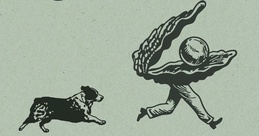There and Back Again: They Faced the Ultimate Medical Emergency
Dec. 10, 2003
My heart raced as I picked up the phone. “Hi, Jane. It‘s time,“ the voice said calmly, following with a series of instructions I hastily scribbled down. I mentally noted the time: 8:25 p.m., August 11, 2003.The call set off a hurricane of events for me and my husband, Tim. Our kids were deposited at their grandparents. We met my Mom and Tim‘s sister, Roxanne, in Acme and sped south to Ann Arbor. At the same time, a team of surgeons from the University of Michigan Hospital boarded a helicopter and flew north to harvest a liver that within hours would be transplanted into my husband.
Just six months earlier, we were living a peaceful hobbit existence in quiet Old Mission, never dreaming our lives would be forever changed. In March, Tim went to the dentist for a routine procedure and was given a course of antibiotics. Within a few days, he began feeling sluggish and started retaining water. A trip to the doctor to check out a possible penicillin reaction hurtled us down a terrifying path of no return: Tim had hepatitis C.
40-YEAR ILLNESS
The news didn‘t get any better in the following weeks. More tests determined that the virus had been attacking his liver for at least 40 years, leaving it barely functioning with severe cirrhosis. He also had three cancerous tumors, another result of the virus. Because of the cancer and extent of the cirrhosis, he‘d be placed at the top of the liver transplant list. The down-side is that the
tumors narrowed his eligibility to six months, at which time he‘d be dropped from the list, succumbing to total liver failure or cancer of the liver, as he wasn‘t strong enough to survive any treatment. Without a new liver, Tim would be dead within 12 to 18 months.
Needless to say, our world was turned upside down. Tim‘s time-bomb of a liver continued to tick slowly away as I mustered all my courage, got his estate papers in order, waded through a torrent of insurance paperwork, and steeled myself to raise our children alone.
It was an exhausting and emotionally-charged summer as we juggled our two children – six and eight – with relatives and traveled to the University of Michigan Hospital in Ann Arbor many times for ultrasounds, CT scans, biopsies, MRI‘s and just about every other medical test available. All of this went under the heading of “transplant evaluation process.“ It would determine if Tim would – or could – be put on the list.
A PERFECT MATCH
Everything boils down to a “MELD“ score (Model for End-stage Liver Disease), a national allocation system that determines who will get a liver and when. All the conditions have to be perfect for a donor match, including blood type and body size. It also helps if the potential transplant patient exhibits a healthy lifestyle, including no alcohol or drugs, which greatly tax even a healthy liver, much less one ravaged by hepatitis C.
On August 6, we finally received word from our nurse-coordinator at U-M Hospital that Tim had been put on the transplant list – a place with no guarantees. In fact, because of a shortage of donors, many people die while waiting.
We packed our bags, created a plan for shuffling the children and connecting with Mom and Roxanne, and gave our nurse-coordinator every possible contact number, including several back-ups with relatives. If a liver becomes available, it‘s a race against time. The liver must be transplanted within 10 to 12 hours, and if the nurse-coordinator can‘t reach you within one hour, they‘ll move onto the next person on the list.
Now it was a waiting game, but thankfully, a short one. Five days later on August 11, we got the call that sent us speeding to Ann Arbor in a rainstorm in the middle of the night. We arrived around 1 a.m. and got Tim settled into a room, where an intern explained the process. Tim showered with antiseptic soap and hospital staff took his vitals, started an IV, and took a chest X-ray and EKG.
It was 3 a.m. by this time. Tim drifted off to sleep while Mom, Roxanne and I spent a fitful night in a waiting room down the hall.
Around 6 a.m. the next morning – August 12 – Mom roused me to say the doctors were in Tim‘s room, so I went down to find out what was happening. Six or eight doctors in white coats were gathered around Tim‘s bed, listening to the head surgeon. Since the U-M Hospital is a teaching facility, very little happens that doesn‘t involved a flock of interns and students trailing behind the attending doctors. In the coming weeks, we took to calling them “the ducklings.“
NO TURNING BACK
At 9 a.m., I walked with Tim as he was wheeled down to pre-op, where a swarm of white-coats started IV‘s, took vitals, and otherwise prepped him for surgery. They took him into surgery around 11 a.m., and I tearfully joined Mom and Roxanne in the waiting area. While Tim and I had always known there was no turning back – that a transplant was his only hope for survival and we‘d been extremely lucky to get to this point – I also knew he might not make it through the surgery. I thought back to the day before, when Tim had to explain this troubling notion to our children, and found myself suddenly overwhelmed with the possibility that I might not see him alive again.
And so the three of us waited... and waited... and waited... finally ending up in the corridor outside the waiting room, where the couches were more comfortable and we could sack out with pillows as hospital staff and visitors walked by. Dozens of other family members waited for their own loved ones, and while I‘d taken to distracting myself over the summer by talking to others in hospital waiting rooms, I now struggled to keep myself from curling up into a fetal position and blocking out
the rest of the world.
Liver transplants typically take anywhere from six to 12 hours, depending on various factors, so we were prepared to wait a while. But at 3:30 p.m. – just four and a half hours later – Tim‘s surgeon, Dr. Juan Arenas, came out to tell us everything had gone fine. A tiny portion of the new organ had been transplanted into a baby also needing a liver, making her and Tim the recipients of a rare “split-liver“ transplant.
DOUBLE-EDGED SWORD
Although privacy laws prohibit us from contacting the baby‘s family (and the liver donor‘s family), we‘ve since learned that her surgery lasted about 12 hours, and she‘s doing well. We‘ve also learned that the donor was a young man who died in an accident.
“It‘s a strange position to be in – on one hand, hoping for a liver to become available, but also knowing in your heart that someone else would have to die for that to happen,“ notes Tim. “It‘s a double-edged sword I really haven‘t come to
grips with yet. I‘m elated for me and my family, but I silently grieve for another family out there who lost their loved one to make it possible. I just thank God that he was compassionate enough to put his name on an organ-donor‘s list. This is what he wanted to happen in the event of his early demise.“
Mom, Roxanne and I moved to another waiting room outside ICU and spent several more restless hours until 7 p.m., when we were finally allowed to go in and see Tim. I‘d read all the literature and knew about the dozens of tubes hooked to his body, including a huge jugular line in his neck. Still, it was a shock to see him – extremely bloated from the surgery – and took a few minutes to process.
Then again, liver transplants entail a huge incision running along the bottom edge of the entire rib cage in a “Mercedes Benz“ emblem design, and the doctors actually pull the ribs up and flex them backwards, “putting the hood up“ to get at the liver area. It‘s no wonder that liver transplants are the most dramatic and invasive of surgeries.
STILL ALIVE
The nurse said they wouldn‘t wake him until morning, so we headed back to the Med Inn – a hotel adjoining the hospital – and crashed after a long few days with very little sleep. At 7 a.m. the next morning, I went up to see Tim. He recalls his first foray back to the real world:
“I‘d been told that I might not make it through the operation, but if I did, not to freak out if there was a breathing tube down my throat when I first woke up. Facing your imminent doom like that, you‘d think there would be some profound thought once you came out of it. But I came to, looked up and thought, ‘Hmmm... ceiling tile. I must still be alive.‘ Then I closed my eyes again and thought,
‘No, it‘s too quick. I haven‘t had the operation yet.‘ But I felt the breathing tube and that‘s when I realized it was over and I was still alive. I smiled and blacked out again for two days.“
Tim spent several days in ICU – during which time the massive Midwest blackout occurred, shutting down hospital systems and thwarting another transplant about to take place. If we‘d gotten the call just a few days later, Tim might not have received a new liver.
He spent 10 days in the hospital, and has been admitted four other times since then – to tweak his anti-rejection meds (which he‘ll take forever), to place a stent in a bile duct, to undergo follow-up corrective surgery, and to work out blood sugar problems, as the meds have made him an insulin-dependent diabetic. We‘re also entrenched in an exhausting round of weekly trips to Ann Arbor for “liver clinic“ and many follow-up tests and appointments – all of which will level off at some point.
BLESSED
As I write this shortly before Christmas, I feel blessed to say that Tim is getting stronger every day. I could just as easily be caring for a husband near death and facing a life without him. Thank goodness for a routine dental visit that set off an alarm, a cancerous liver that shot him to the top of the list, modern science and excellent surgeons, a strong faith in God, and the prayers of many people across the country. It seemed as though every person we‘d ever crossed paths with emerged to offer support and encouragement, and we‘re truly humbled by this outpouring of love.
I‘d like to say our future looks bright, but who among us knows that for sure? No one knows what‘s around the bend, but the least we can do is surround ourselves with good people and a peaceful atmosphere. That old cliche of living each day to the fullest now has new meaning for Tim and me – two hobbits who‘ve truly been “there and back again.“
Freelance writer Jane Louise Boursaw lives on Mission Peninsula and has upcoming stories in USA Weekend, Ladies‘ Home Journal, AARP, Family Circle, Oxygen, Fitness, and Pages magazine.
(SIDEBAR)
The Hidden Plague of Hepatitis C
Hepatitis C – known as the “scourge of the baby boomers“ – is quietly raging through the blood of five million people in the U.S. and more than 200 million people world-wide, according to the National Center for Infectious Diseases (NCID). Those numbers are expected to double in the next decade, making hepatitis C one of the greatest epidemics of this century.
The Center for Disease Control predicts that by 2010, it will claim more victims than AIDS. Between 1993 and 1998, hepatitis C infections skyrocketed by a dizzying 260 percent. Dozens of people within our own circle of friends and family have stepped forward to say they either have the virus, or they know someone who does.
Hepatitis C was only given a name in 1989, but has been in the U.S. blood supply since before WWII, according to the NCID. Because blood has only been tested for it since 1992 (and still isn‘t in many countries outside the U.S. and Europe), anyone who‘s received a transfusion or blood products prior to that is at risk. Other risk factors include any direct or indirect exposure to infected blood – poorly sterilized medical instruments, blood spills, unbandaged cuts or injuries, IV drug use, and tattooing or body piercing. There are also less obvious sources of blood – shared razors or toothbrushes and body secretions containing small amounts of blood. But like Tim, many people have no idea exactly how they got it.
As the disease continues to expand into the general population, it‘s no longer associated solely with poor people or drug users as it once was. And yet, it‘s not particularly easy to get in everyday life – Tim and I have been together for 24 years, and I don‘t have it.
Symptoms can be evasive – fatigue, mild fever, jaundice, muscle cramps, joint aches, loss of appetite and vague abdominal pain. Many cases go undiagnosed because a decade can pass between individual symptoms as they come and go. If caught early enough, though, a variety of treatments may reduce the disease enough to protect the liver from further damage.
If you have any risk factors, you must get tested for it. Knowing what we know now, we recommend that everyone be tested. If you know you have it, you can reduce the stress on your liver by avoiding alcohol (which causes severe damage to the liver in hepatitis C patients) and toxins such as copper, aspirin, some over-the-counter and prescription drugs, and vitamin A. I believe Tim held
on for so long with no symptoms because he‘s lived a clean, alcohol-free, organic life for the past
26 years.
Trending

Winter Break at the Library
Trying to keep the kids busy while school is out? Head to the library! Dec. 22, take your 12+ tweens and teens to the Mesick… Read More >>
Umbo Is Coming...to The Little Fleet
Winter isn’t just coming—it’s already here. But if you want a break from the December blues, head to The L… Read More >>
GTB Starting the Year with Tradition
The Grand Traverse Band of Ottawa and Chippewa Indians hosts the Kchi Wiikwedong Anishinaabek Maawnjidowin Round Dance on Ja… Read More >>


